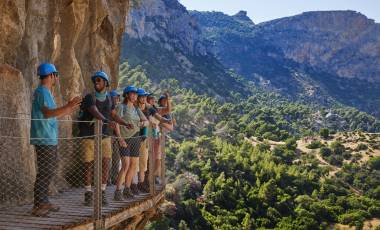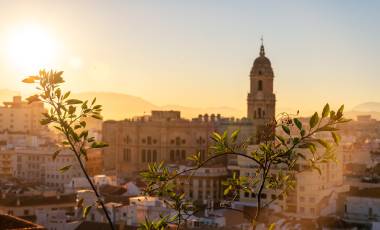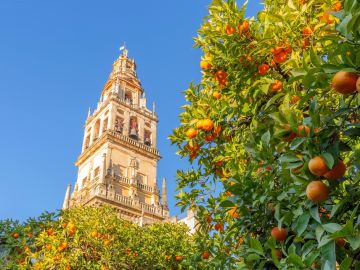
5 Locations Where You Can Appreciate Spain’s Moorish Heritage
The Moors, who conquered the Iberian Peninsula in the 8th century and ruled for 700 years, left an indelible mark on Spain’s architecture, design, and culture, particularly in the Andalucía region. Today, Spain’s Moorish heritage reflects the country’s cultural and historical past, and the Andalucía region is richly rewarding for visitors.
Those interested in history and architecture will undoubtedly appreciate this blend of Islamic, Phoenician, Roman, Christian, and Spanish traditions, seen in the intricate details and ornate patterns of many of Spain’s most iconic landmarks, including the Alhambra Palace in Granada, the Great Mosque of Cordoba, and the Real Alcázar in Seville.
Visitors to these locations can appreciate the skill and creativity of the Muslim artisans who designed and built them while learning about the complex interplay between different cultures and religions in Spain’s past. But the appeal of these exquisite locations is also hard to resist for those travelling to the region for the food, the flamenco, and scenic hikes through the Sierra Nevada mountains, home to mainland Spain’s highest peak, the Mulhacén and a diverse range of flora and fauna.
Join a hike through the region focusing on the key locations known for Moorish heritage and Walk Spain’s Sierra Nevada & Granada, admire the region’s best bits on Andalucía Highlights Walk – Premium Adventure, or opt for centre-based walking from a beautiful farmhouse on our Walking in Andalucía adventure. Whichever route captures your imagination, these are the five key Moorish locations to know about before you decide.
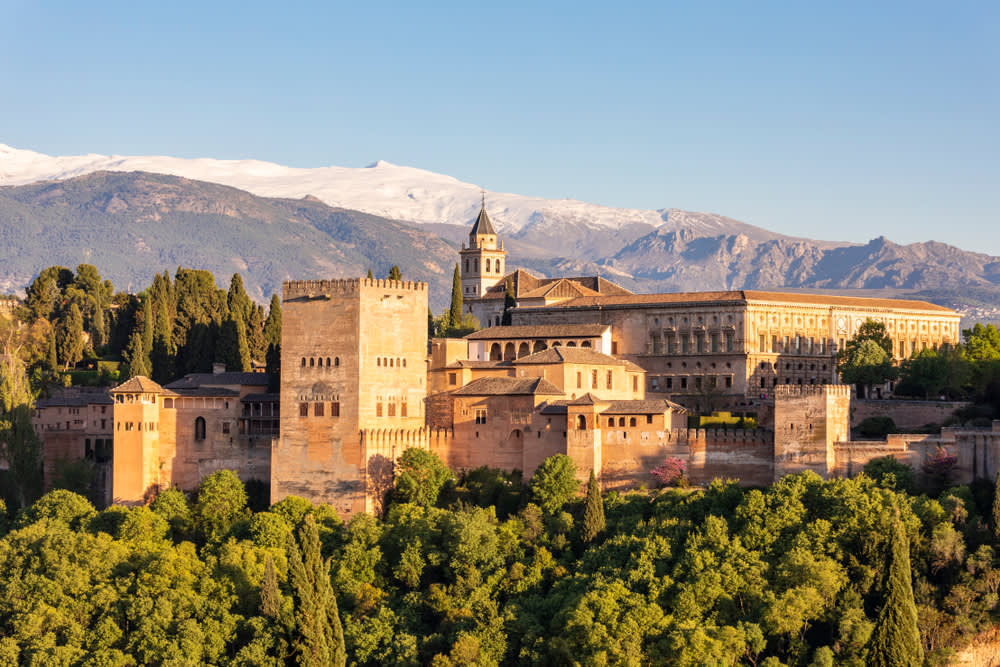
1. The Alhambra Palace, Granada
The Alhambra’s architecture is a testament to the skill and creativity of the Muslim artisans who designed and built it between the 13th and 15th centuries, and it remains one of Spain’s most remarkable architectural treasures. Today, visitors can admire its architecture, which reflects Islamic and Spanish cultures. The palace walls are adorned with intricate carvings and geometric patterns, while the ceilings are decorated with ornate plasterwork and colourful tiles. The palace also features serene courtyards filled with fountains and gardens that showcase the Moorish penchant for symmetry and nature.
On an eight-day Walk Spain’s Sierra Nevada & Granada guided group trip through the nation’s highest mountain range, you could arrange an optional visit to the Alhambra when your trip concludes in Granada.

2. The Great Mosque, Cordoba
The Great Mosque in Cordoba, or the Mezquita, is a spectacular example of Islamic architecture and design. Originally built in the 8th century, various Muslim rulers expanded the mosque over time, resulting in a unique blend of architectural styles. The mosque’s most striking feature is its hypostyle hall, with 850 jasper, onyx, marble, and granite columns. The horseshoe arches, intricate tilework, and ornate carvings add to the mosque’s grandeur. After the Christian reconquest of Spain, a cathedral was built in the centre of the mosque, creating a fusion of two distinct religious traditions. Today, visitors can appreciate the mosque’s beauty and historical significance while learning about the complex interplay between different cultures and religions in Spain’s past.
On a seven-day walking holiday, Andalucía Highlights Walk – Premium Adventure, you’ll visit the historic heart and capital of the Moorish Empire: Cordoba. You’ll venture through flower-filled courtyards on a guided walking tour, beginning in the narrow streets of the Jewish Quarter. Then you’ll visit the Mezquita, entering through the entrance courtyard filled with orange and palm trees and fountains. If you plan ahead, it may be possible to book a spot to climb the bell tower for views over Cordoba.

3. Real Alcázar, Seville
A visit to the Real Alcázar in Seville is a journey back in time to the city’s rich history. This magnificent palace complex, which the Spanish royal family still uses, blends Moorish and Renaissance architecture and design. Visitors can explore the lush gardens, ornate courtyards, and opulent halls, which showcase intricate tilework, plasterwork, and carvings. One of the highlights of the Real Alcázar is the Palacio Mudéjar – a combination of Moorish craftsmanship and Christian aesthetics, as it was built for a Christian king in the 1360s. It features an incredible array of stucco decorations and a remarkable gold dome.
Visit this splendid royal palace on Walking in Andalucía, where you have a day at leisure to get to know this city. While in Seville, you could also watch a traditional Flamenco performance or explore the oasis-like Maria Luisa Park, which inspired many other public parks across Spain with its liberal use of tiled fountains and serene ponds.
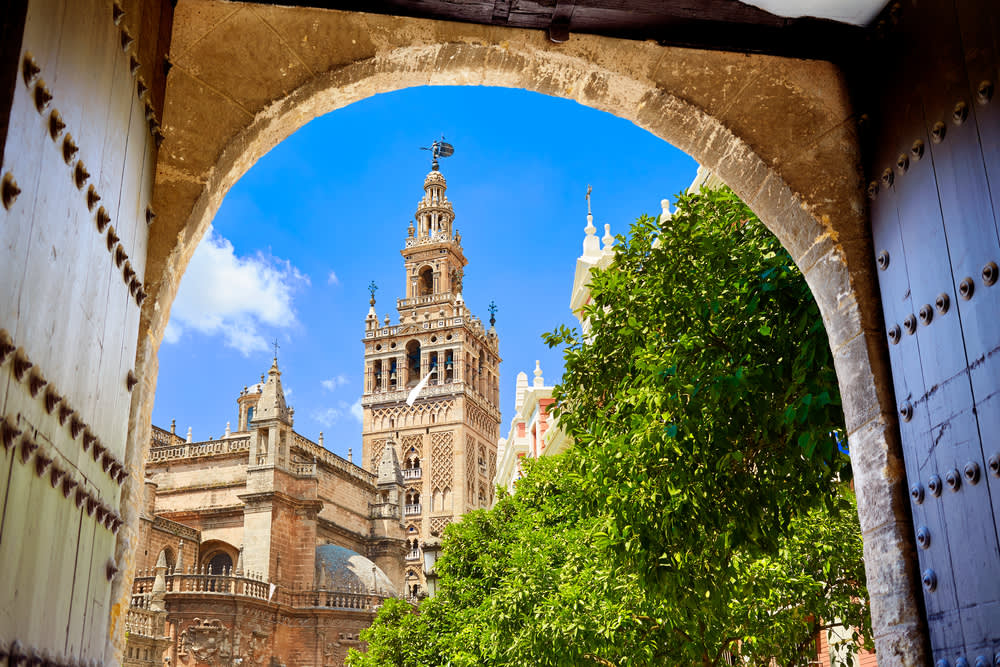
4. La Giralda, Seville
Visiting La Giralda in Seville is an experience that transports visitors to the heart of Spain’s rich history and cultural heritage. Originally part of the Great Mosque of Seville, the bell tower is now one of the city’s most iconic landmarks. The tower’s blend of Moorish and Renaissance architecture and design is a testament to the different cultures and religions in Spain’s past. Visitors can climb to the top of the tower and enjoy spectacular views of the city while admiring the intricate tilework and carvings that adorn the tower’s interior.
You can visit Seville on a seven-day Andalucía Highlights Walk – Premium Adventure. A guided bike tour of the city finishes with a feast of local cuisine on a rooftop terrace with a wonderful view of the Cathedral. You can also enjoy a free day in this magical city on day five of our Walking in Andalucía trip, after covering sections of the Sierra de Grazalema Natural Park, El Chorro gorge, and the cliffside walkway called El Caminito del Rey.
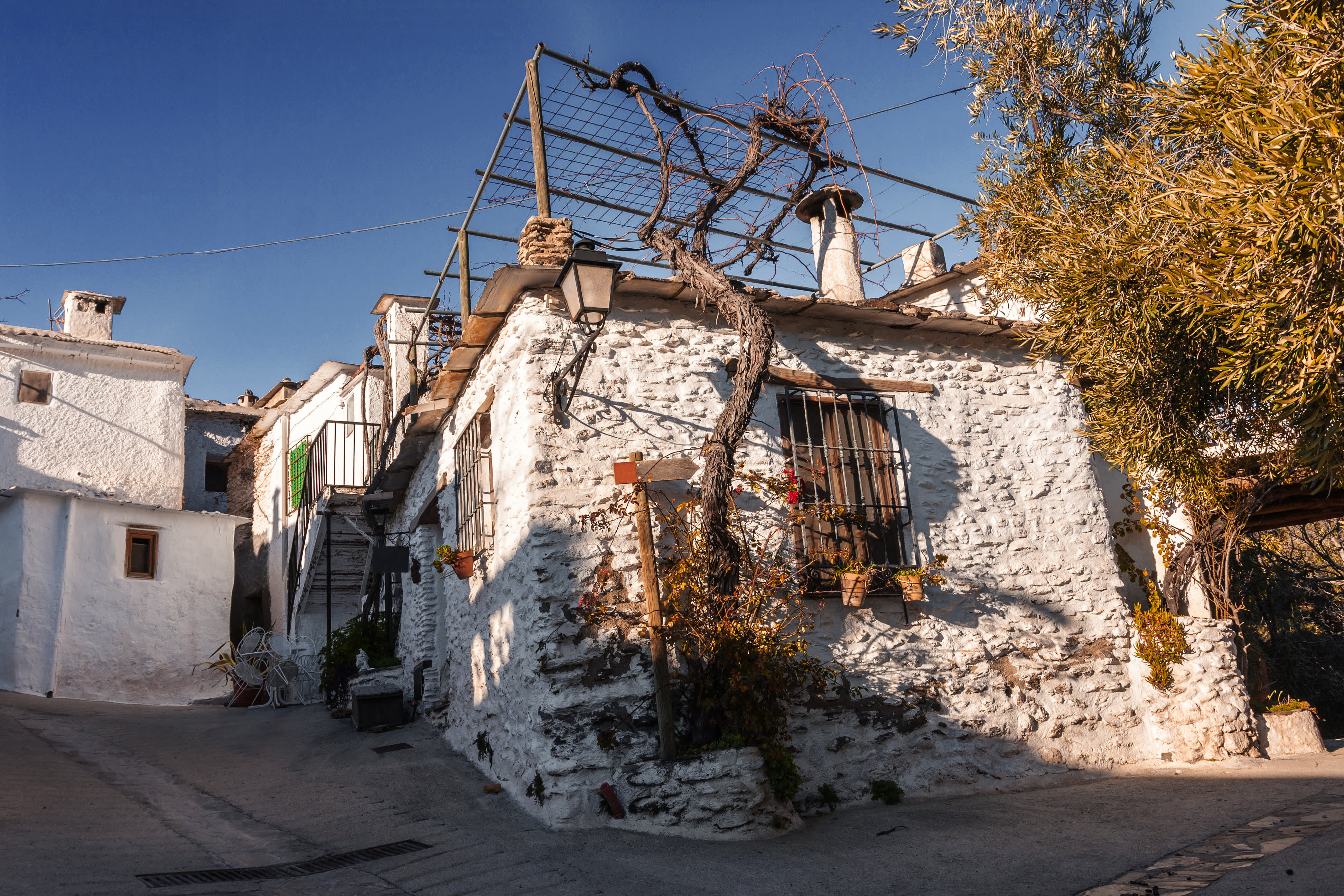
5. Pueblos Blancos
Spain’s Moorish white villages, or Pueblos Blancos, are characterised by their whitewashed buildings, narrow streets, and views of the surrounding countryside. Many of these villages were originally built by the Moors in the 8th century and influenced by Spanish and Roman cultures. Visitors can explore the labyrinthine streets, visit ancient castles and fortresses, and enjoy traditional Spanish cuisine in local restaurants.
Join the eight-day Walk Spain’s Sierra Nevada & Granada trip, and you’ll explore La Taha, a collection of Moorish villages in a deep gorge, and the white village of Trevélez, perched at 1,550 metres and renowned for its excellent serrano ham. Those fascinated by Moorish history will appreciate the opportunity to follow the old mule trail to Junta de los Rios, the latest stand of the Moorish king, Aben Aboo.
Our Walking in Andalucía trip also takes you through some of the country’s most charming white villages, including Benaocaz and Setenil de las Bodegas in the Sierra de Grazalema, a UNESCO Biosphere Reserve known for its remarkable limestone mountains, and the white village of Montejaque located in the heart of Grazalema Natural Park.
If this has inspired you to book a trip to Spain, view our complete collection of trips here.





